Are you looking for a nice itinerary in China that starts from Hong Kong? Are you interested in food culture and wish to have your taste buds satisfied during your trip? If your answers are yes, then this 10 days Authentic China Food Tour from Hong Kong will definitely meet your needs. We have planned the most famous cities for foodies in China, which are Hong Kong, Guangzhou, Chengdu and Beijing. You will have cantonese cuisine in Hong Kong and Guangzhou; super spicy food in Chengdu, plus visiting the pandas in the research base here; and royal cuisine in Beijing like the Peking Roast Duck. This is the tour that has all you need to experience as a culinary lover during a short tour. Don’t hesitate to contact us for more information!

Welcome to China! Your amazing tour in China starts at Hong Kong. Our professional guide will be waiting for you at the arrival hall, holding a sign with your name on it. Afterward, you will be transferred to the hotel. Here is some brief information about Hong Kong, which may help you to know more about the place you are visiting.
Hong Kong, also known as the “Oriental Pearl”, is an extremely prosperous metropolis where modern bustle blends perfectly with traditional culture. Hong Kong literally means “Fragrant Harbor” in Chinese. It is said that in ancient times, it used to be a port for spice trading, from which the region gets its name.
Covering an area of about 1,103 square kilometers and with a population of more than 7.43 million, Hong Kong is one of the most crowded places on earth. Besides beautiful cityscape, there are also many local delicacies for you to enjoy. Influenced by British and Cantonese eating habits, people in Hong Kong have high requirements for food, not only for the taste but also for food exquisiteness. Rice noodles, Wonton noodles, milk custard, and pineapple buns, etc. are what you cannot miss when traveling in Hong Kong.
When you arrive at the hotel, the guide will help you to check in, and please make sure to take care of your belongings. Your tour in Hong Kong will officially start on the second day, so you can just walk around by yourself today and enjoy what you find. Wish you a happy stay.
After breakfast, your tour in Hong Kong officially starts, and the first stop is Victoria Peak, which is a premier tourist attraction in Hong Kong. You will take the peak tram to get to the top where you can see the bowl-shaped Peak Tower. It was designed by the famous British architect Terry Farrel and is a must-see destination for sightseeing, recreation, and shopping. Standing on the viewing platform, you can get a bird's-eye view of the whole city.
After the tour on the peak, you will set off to Aberdeen Fishing Village, which is the oldest village for fishermen in Hong Kong. Now, traditional sampans, fishing boats, and modern yachts are moored side by side in the fishing village, creating an interesting contrast of traditional and modern life. You will take a sampan to have a closer look at the village and enjoy the picturesque scene, which would be an enjoyable experience.
During lunchtime, you will enjoy the dim sum in the Jumbo Kingdom Floating Restaurant, which has been one of the landmarks of Hong Kong. As the largest restaurant floating on the water, it was open to the public in 1976 and can hold about 2,300 people. Many tycoons and celebrities have had meals or held parties in this restaurant.
After lunch, you will go to Repulse Bay. Located in the southern part on Hong Kong island, the bay is in the shape of a crescent. Known as the “No.1 Bay in the World”, it is also reputed as the “Oriental Hawaii”. Situated at the foot of hills and facing the water, the bay is regarded as an auspicious place according to the basic principle of Fengshui (Chinese geomancy). Therefore, many wealthy people, bankers, and celebrities choose to live in this area, making it one of the most expensive districts in Hong Kong.
After the visit to the bay, you will head to the Stanley Market and Temple Street to experience the charm of local markets. Stanley Market is one of the places you cannot miss when visiting Hong Kong. Strolling on the street, you will find small shops selling various goods including garments, souvenirs, and Chinese handicrafts. It is a place to get some inexpensive goods and gifts, so many local people are also frequenters to this area.
Temple Street is one of the most popular night markets in Hong Kong, attracting millions of tourists each year. Many stalls, cheap restaurants, and food stands make the street quite lively as well as a good place to have a taste of cheap and fine local snacks. Fish balls, clay pot rice, and milk custard are highly recommended. After the tour, you will go back to the hotel.
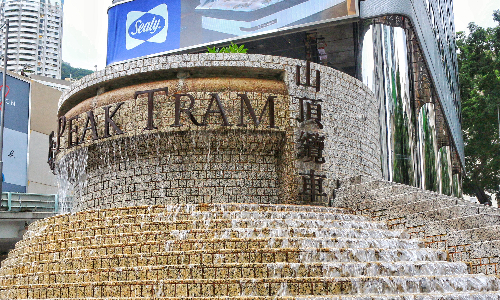
After breakfast, you will head to Lantau Island, which will take about 40 minutes’ drive towards the west (about 35 kilometers). We will stop at Tung Chung 360 Cable Car Station. At the station, you will take cable cars to get to the top, which may take about 25 minutes. Here are two kinds of cable cars: standard cabin and crystal cabin, and what we have arranged is the standard one. The major difference between the two cabins is that: the whole crystal cabin including the floor is made of tempered glass so that visitors can get a panoramic view around and below them during the ride, and therefore its fare is higher. But you can certainly get great views from the standard ones as well. If you would like to take the crystal cabin, please contact us in advance.
When arriving at the top, you will see the Big Buddha. Weighing 250 tons and with a height of 23 meters, it is the largest bronze seated statue of Buddha in the open air. The pedestal of the statue has followed the design of the Tian Tan in Beijing, or the Temple of Heaven, so it is also known as the Tian Tan Buddha. There are 260 steps leading to the statue, and once you arrive there, you can enjoy the beauty of Lantau Island.
Next to the Big Buddha is the Po Lin Monastery. “Po Lin” literally means “precious lotus” since the lotus flower is a unique symbol in Buddhism, which means “purity”. Built in 1906, the monastery is one of the four great monasteries in Hong Kong. When you get there, you will see how popular this temple is. It consists of three major halls: the Main Shrine Hall of Buddha, the Hall of Skanda Bodhisattva, and the Grand Hall of Ten Thousand Buddhas. Strolling around the halls, you will find various figures of Buddhism.
After lunch, you will have some free time at Ngong Ping Village, a Chinese culture-themed place. There are many souvenir shops and attractions, and you might also see traditional street performances such as martial arts and Cantonese operas. After the tour, you will go back to the hotel.
Apart from the tour mentioned above, here is an optional activity for you:
After the visit to Ngong Ping Village, you can go to Tai O Fishing Village by public transportation since no private vehicle is allowed on Lantau Island. Tai O is famous for its fishing culture, seafood, and traditional stilt houses. Meanwhile, it is also one of the few fishing villages remained in Hong Kong, which represents the traditional fishing life and culture in Southern China. Moreover, you will get a chance to taste local snacks and can even have a sampan ride if you like.
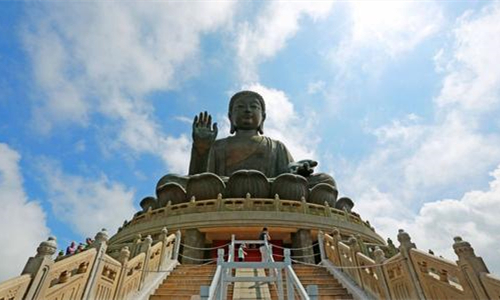
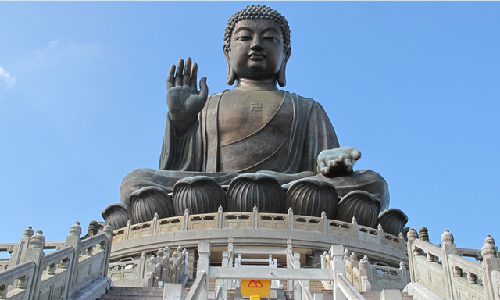
 Guangzhou
Guangzhou After breakfast, our guide will pick you up at the hotel, and then you will head to the Hong Kong West Kowloon Railway Station. You will take the estimated high-speed train G80 08:05/08:56 to Guangzhou. Upon your arrival, the local guide will be holding a sign with your names on it and waiting for you at the exit. Here is some information about the city to help you know more about the place you are visiting.
Located in the Pearl River Delta, Guangzhou is the third largest city in China, just after Beijing and Shanghai, and it is also one of the starting points of the ancient Maritime Silk Road. In the Tang (618-907) and Song (960-1279) Dynasties, it had already been a world-renowned harbor. With years of development, now it has been a modern and lively city worth visiting. There are not only beautiful scenic spots for you to explore but also various local delicacies for you to have a bite. Different from the cooking style in Northern China, Cantonese people prefer to lay emphasis on the original flavor of ingredients. Therefore, if you are interested in or would like to try some light food, you should not miss the chance of tasting Cantonese snacks.
The first stop of today’s tour is Chen Family Ancestral Temple. Originally known as the Chen Academy, it was built in 1888. Now it is the largest, best-preserved, and most beautifully decorated ancestral temple of the Qing Dynasty (1644-1912) in Guangdong. Composed of 19 buildings in different sizes, it is a building complex in which each single building is independent and interrelated. Walking inside, you can see many exquisite buildings as well as decorative objects such as wood carvings, stone carvings, clay sculptures, pottery sculptures, and iron casting crafts.
After the tour to Chen Family Ancestral Temple, you will go to Shangxiajiu Pedestrian Street. As one of the most prosperous districts in the city, the street is the best place to experience the Cantonese culture. Here you can see many unique traditional buildings such as black-brick mansions and arcade houses. What’s more, foodies should not miss the chance to try some specialties such as Cantonese mooncakes, sliced fish congee, and wonton noodles. During lunchtime, you can take your time to enjoy your meal by yourself. If you have a sweet tooth, you can also try some local desserts after lunch. Generally speaking, sesame paste, milk custard, and mango pomelo sago are highly recommended.
In the afternoon, you will visit Yuexiu Park. It is the largest park with comprehensive functions in Guangzhou. There is a famous hill named Yuexiu inside, from which the park gets its name. 2,000 years ago, the hill used to be the place where ancient kings of small states in Southern China held royal banquets. Now it has been the landmark of Guangzhou and the place where local people frequently visit.
After the tour in the park, you will go to the Canton Tower. The tower, nicknamed “Xiao Man Yao” meaning “slim waist”, is the TV and Sightseeing Tower in Guangzhou, with a height of 600 meters. You will take the lift to the observation deck of the tower and get a full view of the city.
Before heading back to the hotel, here is an optional activity for you: taking a night cruise on the Pearl River, which is generally a 50-90 minutes’ tour on the river. After a whole day’s tour, you might be a little tired, and sitting on the deck as well as enjoying the spectacular night view will be quite relaxing and refreshing.
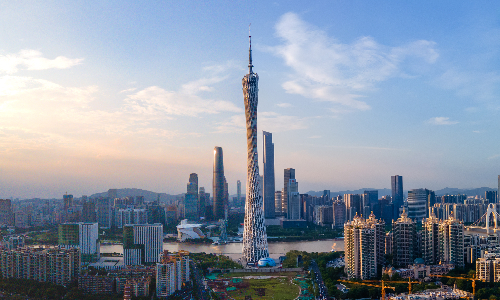
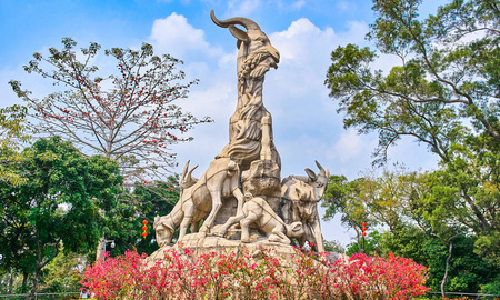
 Chengdu
Chengdu In the morning, there is no tour arrangement. Therefore, you can take your time to stroll around. It is highly recommended that you find a restaurant to try local dim sum. Dim sum is a kind of traditional Chinese food including a variety of items, such as steamed vermicelli roll, shrimp dumplings, and barbecued pork buns, which are all served in small portions. It is very popular among the local people, and they usually have it for breakfast, brunch, or lunch while drinking tea.
In the afternoon, you will take the estimated flight 3U8734 16:25/18:45 to Chengdu. When you arrive, the local guide will be holding a sign with your names on it and waiting for you at the arrival hall, and then you will head to the hotel in downtown Chengdu. Here is a brief introduction to the city.
Located in Southwestern China, Chengdu is reputed as the “Land of Abundance.” With a long history and rich culture, it is not only an ancient city but also one of the most popular destinations attracting numerous tourists from China and abroad. The vibrant nightlife and amazing local cuisine make Chengdu a place that visitors do not want to leave.
When you get to the hotel, the guide will help you to check in. There will be no scheduled visit in the evening, so you can just walk around by yourself if you like.
Optional Activity:
Having an authentic Sichuan Hot Pot dinner. With a history of more than 2,000 years, hot pot has been one of the most popular food in China. It is actually a boiling pot with a spicy soup base, accompanied with sliced meat and raw vegetables. When eating hot pot, you can pick what you like and cook it in the soup, then dip it in a delicious sauce which you can concoct according to your personal taste.
After having breakfast, your tour in Chengdu starts. The first stop is Chengdu Research Base of Giant Panda Breeding, which is the best place to see giant pandas. As national treasures in China, giant pandas have been in existence for more than 8 million years, and are therefore called the “living fossil”. With black and white fur as well as a chubby body, they look like gentle and adorable fluff balls. But can you believe that the seemingly clumsy giant pandas can actually run as fast as the best runner when encountering danger, and they are even stronger than tigers? Moreover, they were carnivores long before and even used in wars as military animals. After millions of years’ evolution, giant pandas become lovely “vegetarians”. Now there are only 1,864 wild pandas and about 600 captive ones in the world, so they are regarded as the national treasure of China. As the home to giant pandas, there is no better place than the research base to take a close look at these lovely creatures. When wandering through the base, you can closely observe how pandas eat, rest, play with each other, and even see how baby pandas are raised, which will be a unique and unforgettable experience for sure.
In the afternoon, you will visit Chuançais Museum, or Sichuan Cuisine Museum. It is the only museum with food culture as the display content in the world. Here you can have a better understanding of many important elements of Sichuan culture, including Sichuan cuisine, alcohol, tea, operas, buildings, and gardens. Different from other museums, it also provides a chance for visitors to not only watch chefs making Sichuan cuisine and have a taste of it but also try to make traditional local food such as bean sauce and preserved eggs on their own.
After the interesting tour in the museum, you will go to People’s Park, an old park with comprehensive functions in Chengdu. It is one of the places where local people enjoy their leisure time. The most famous and popular place in the park is Heming Tea House, in which you can have a taste of local tea. It is known that people in Chengdu like drinking tea and the habit has even become a unique culture of the city. As the oldest traditional tea house in Chengdu, Heming Tea House has been there for almost 100 years. Locals often gather to play cards, Mahjong, and drink tea in the tea house, which is the local way of life. You can just sit down and drink a pot of tea like the locals, which would be quite relaxing.
The last stop of today’s tour is Jinli Street, a famous pedestrian street in Chengdu. As one of the busiest and oldest streets in the city since ancient times, it is famous for various authentic and mouth-watering local snacks as well as traditional handicrafts. Walking on the street, you can see many skilled folk craftsmen making exquisite Chinese traditional handicrafts, such as clay figurines, paper-cuttings, and sugar paintings. The buildings along the streets are of architectural styles of the late Qing Dynasty (1840-1912), which will make you feel like walking on an ancient street. After the tour, you will go back to the hotel.
Apart from the tour mentioned above, here are two optional activities for you:
1. When visiting the Chuançais Museum, you can have a chance to attend the cooking class to learn how to cook Sichuan dishes.
2. In the evening, you may go to watch the Sichuan Opera in a famous local theater named Shufeng Yayun. Sichuan Opera is originated around the 18th century and is quite famous in China, and the highlight of the show is the face-changing performance. Performers wear colored costumes and opera facial masks and their masks can be changed at an amazing speed, which would be very impressive.
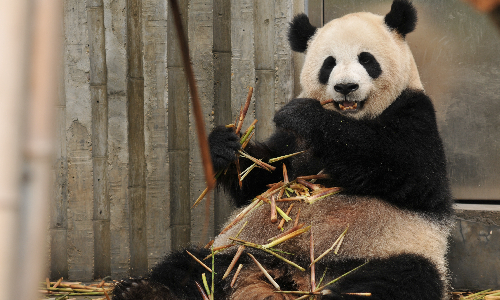
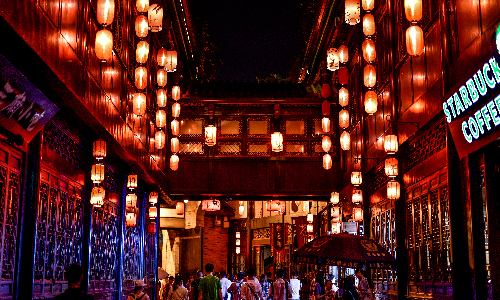
 Beijing
Beijing Today you will take the estimated flight CZ6162 12:25/15:05 to Beijing. When you arrive, the local guide will be waiting for you at the arrival hall while holding a sign with your names on it. Afterward, you will transfer to the hotel.
When you arrive at the hotel, the guide will help you to check in, and please make sure to take care of your belongings. There will be no scheduled visits today so you can just walk around by yourself if you like in the evening. A brief introduction of the city is as follows to help you know more about Beijing:
As the capital of China, Beijing is not only the political and cultural center of the country but also the hub of international exchanges. It is listed as one of the six ancient capitals of China together with Xi’an, Luoyang, Kaifeng, Nanjing, and Hangzhou. Moreover, Beijing provides not only places of interest to visit, but also abundant must-try delicacies, including Peking roast duck, noodles with soybean paste, and Mongolian hot pot. Are you excited about your trip in this city? Your tour will officially start in the next day, however, here are some free time suggestions that you can do today:
Firstly, you can go to Houhai Lake to explore the nightlife in Beijing. It was originally an artificial lake with a history of more than 700 years. Now this area has been a famous tourist spot. When night falls, lively music from the bars will come into your ears, and restaurants selling local cuisines are crowded with people. Strolling on the street and taking a bite of the local snacks will be a great experience.
Secondly, if you would like to have the must-try local food, you can find a restaurant to have the Peking Roast Duck. As a time-honored dish, the roast duck is what you cannot miss during your stay in Beijing. Fat but not greasy, the duck has crisp skin and tender meat. It is often chopped into pieces and can be eaten with sliced spring onion, cucumber, sweet bean sauce, and more importantly, rolled up in the thin pancake. It has won popularity among people in China and beyond.
After breakfast, you will leave for Tian’anmen Square. With a history as long as 700 years, it is the largest city square in the world today. The highlight of the square is the Tian’anmen Gate Tower, which was first built in 1420 as a three-story wooden archway. During the Ming (1368-1644) and Qing (1644-1912) Dynasties, it served as the front gate of the imperial palace. On October 1, 1949, the founding ceremony of the People's Republic of China was held on Tian’anmen Square and the announcement was made by Chairman Mao on the Tian’anmen Gate Tower. Since then, it has become a symbol of modern China.
Walking through the gate, you will get to the Forbidden City (closed each Monday), also known as the Palace Museum. Covering an area of 720,000 square meters and with more than 70 palaces and over 9,000 rooms, it is the largest royal palace in the world. Located in the center of the central axis of Beijing, the great palace complex used to be the residence of emperors and their households during the Ming and Qing Dynasties.
Walking out of the Forbidden City from the north gate, you will find Jingshan Park, which used to be a royal garden. Jingshan is a small hill inside the park, and the history of it can be traced back to the Yuan Dynasty (1271-1368). And during the Ming and Qing Dynasties, many fruit trees were planted as well as many pavilions were built here, making it a park to spend some leisure time for emperors and royal families. Standing on the highest point, Wanchun Pavillion, you can enjoy a panoramic view of the Forbidden City.
In the afternoon, you will have a tour in hutong near the Shichahai area, which will provide a chance for you to experience the life of old Beijing. Hutong is the name of a narrow street or lane formed between the walls of traditional quadrangle courtyards. Originated in the Yuan Dynasty, hutong has boasted a history of over 700 years. Now there are over 7,000 hutong scattered in Beijing. You will also have the Rickshaw ride to tour around the old hutong, and even have a chance to walk into one of the quadrangle courtyards to have a close look at the local traditional life.
The last stop of today’s tour is the Summer Palace. Originally built in 1750, it is the best-preserved royal garden in the world and is praised as the “Royal Garden Museum” formed by pavilions, halls, temples, hills, and palaces. Moreover, the Kunming Lake, a replication of the famous West Lake in Hangzhou, makes Summer Palace a great and relaxing place to enjoy graceful landscapes. Among all the historical sites inside, there is a famous promenade, which is a 728-meter long corridor with 548 columns. Besides the exquisite design, the most amazing part of the corridor is that there are more than 14,000 colored paintings decorated on the square beams of it. And it was registered in Guinness World Records as the longest corridor in the world. After the tour, you will return to the hotel.
Apart from the tour mentioned above, here is an optional activity for you:
In the evening, you can go to the Red Theater to watch a performance named Legend of Kungfu (19:30-20:50). The show tells the story of how a young monk becomes a Kungfu master. Excellent Kungfu practitioners demonstrate the story via Chinese martial arts and traditional dance moves. It has attracted many international tourists and received high praises since 2004.
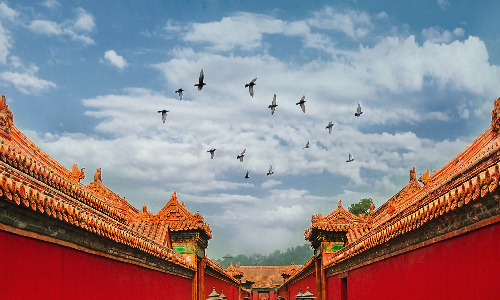
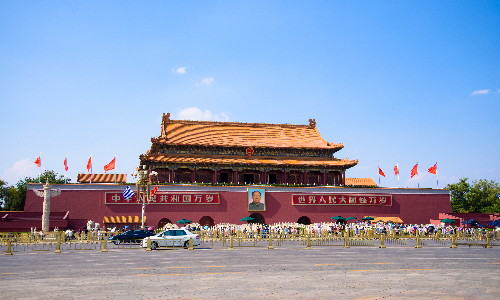
After breakfast, you will set out for the Ming Tombs, and it will take about 60 minutes to get there (about 50 KM, in the northwest of Beijing). Covering an area of over 120 square kilometers, the tombs are the resting places of 13 emperors and 23 empresses, as well as many concubines, princes, and princesses of the Ming Dynasty (1368-1644). Today, you will pay a visit to the Sacred Way and the Chang Tomb.
The Sacred Way is a 7.3-kilometer-long path and used to be the official and the only entrance to the tombs. Strolling on the path, you will first see a huge stone tortoise carrying a tall stele inscribed with the merits and achievements of the emperors. Walking past the stele, you will find there are 12 pairs of huge stone statues of real and imaginary animals as well as 6 pairs of stone statues of officials lined on both sides of the path, which are collectively called Shi Xiang Sheng in Chinese. These statues are regarded as the guards of the deceased, aiming to reproduce the impressive and dignified scene for the emperor.
According to the typical layout of imperial mausoleums in ancient China, the scared way would directly lead to the first mausoleum built in the imperial cemetery. Therefore, after the visit, you will first reach the largest, oldest, and best-preserved one among the Ming Tombs, the Chang Tomb. It is the burial place of Emperor Yongle and his empress. It mainly consists of a palace on the ground and an underground one. The palace on the ground is named Ling’en, and it was the main place to worship the emperor and his empress. Ling’en Palace was elaborately designed in a way that demonstrates the paramount position of the emperor: it was built as nine jian (a basic unit of Chinese architecture, meaning space between two columns) wide and five jian long since the numbers nine and five represent the supremacy of the emperor in ancient times.
After the tour in the Ming Tombs, you will have lunch. Afterward, you will go to Mutianyu Great Wall. We will drive northeast for about one hour(about 40KM) to get there. Mutianyu Great Wall was built in the Ming Dynasty (1368-1644) and is quite magnificent as well as well-preserved. Surrounded by forests, it is a great place to enjoy the natural beauty. Moreover, tourist facilities such as cable cars, chairlifts, and toboggans are provided to help you go up to and descend from the wall, making it much more convenient for visitors of all ages to visit.
Here are three options for you to go up to and down from the Great Wall:
1. Taking the cable car to go up to and down from the wall;
2. Having a chairlift ride up to and down from the wall;
3. Having a chairlift ride up to the wall while taking the toboggan down. (Toboggan is only available for people aged no more than 60 years.)
On the way back to the hotel, there is one picture stops: the Bird’s Nest (the National Stadium) and Water Cube (the National Aquatic Center). With unique building designs, the two were respectively the main stadium for the 2008 Beijing Olympic Games and the major natatorium. You will just pay a visit outside and you may take some photos if you like.
Apart from the tour mentioned above, here are two optional activities for you:
1. After the day’s tour, you can have a foot massage, helping you to relax. As a traditional Chinese medical therapy, foot massage has enjoyed a history of more than 3,000 years. According to the principle of Chinese medicine, feet are to the human body is what the root is to a tree, and therefore feet play an important role in keeping the body healthy. Moreover, proper massage on the feet can help relieve stress, so it is recommended to have a try.
2. You can choose to have a 2-3 hours’ cooking class instead of visiting the Sacred Way and the Chang Tomb in the morning.
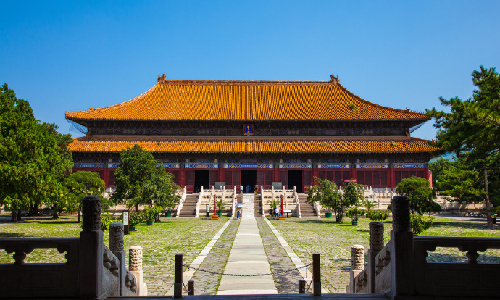
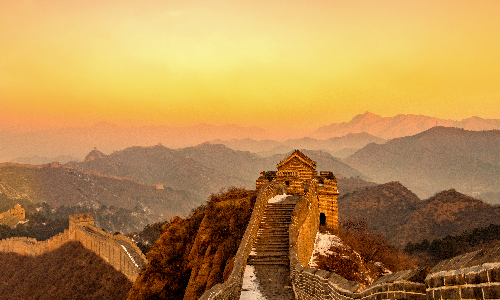
After breakfast, our guide will pick you up at the hotel and then take you to the airport. Your 10-day tour in China will come to an end. Have a safe flight!
Author: Peng Chunlei
Proofreader: Li Yiwen
| City | Five Star hotel list | Four Star hotel list |
|---|---|---|
| Hong Kong | Harbour Grand Kowloon | Harbour Plaza North Point Hotel |
| Guangzhou | Baiyun Hotel | Hotel Landmark Canton Guangzhou |
| Chengdu | Sofitel Chengdu Taihe | Holiday Inn Express Chengdu Jinniu |
| Beijing | Sunworld Dynasty Hotel Beijing Wangfujing | Sunworld Hotel Wangfujing |
 |
![]() About your child or infant, please contact us for a discounted price.
About your child or infant, please contact us for a discounted price.



We started with a few days in Beijing & ended in Shanghai, from where we visited the Forbidden City and Great Wall. In between we visited Terra Cotta Warriors Museum, Panda Base, Shanghai Disneyland.

We had a wonderful holiday in China which will remain long in the memory. China is a breathtakingly beautiful country full of splendid temples and palaces, mountains and rivers, peaceful rural scenes and bustling shopping streets.
 QUICK ENQUIRY
QUICK ENQUIRY